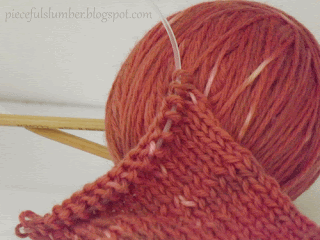I have a dented pot I bought intentionally for dying in. It was discounted because of the damage, which damage also makes it easy to spot that this is not one of my cooking pots, and my "spoon" is an old stick so I don't worry about the toxicity levels of my dye ingredients. Natural dyes can be just as toxic as chemical dyes. So even though I tend to go for natural dyes I still don't want my experiments mixing with my food.
The vinegar and sumac are both acidic enough to act as the only mordant necessary. Or so I thought. I was attempting to dye cotton this time too, but cotton clearly needs more mordanting. Coming out of they dye pot the cotton lost more than half its color in the first rinse, although the resulting pastel is not unpleasant.
The wool on the other hand held its deeper richer color beautifully. Isn't it pretty?As you can see there is quite a lot of variation in the resulting wool yarn, lighter bits where the knots of the skein kept the dye from penetrating, darker bits where it oxidized or brushed up against the pot and a few purpler streaks where I didn't get all the plant matter out of the pot before putting the yarn in and it must have been next to a poke berry. I love the way the color plays and changes with this batch and as you can see it's already being knit up into something. What kind of something uses such a small batch of hand-dyed yarn to best show it off? Stay tuned. :)




No comments:
Post a Comment
My dear, few, readers you inspire me to keep writing. Thank you.
Comments are moderated to avoid spam and so that I do not have to subject you to that annoying "if you're not a robot" thing.